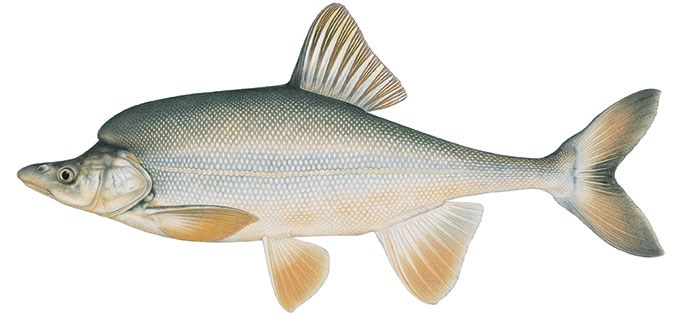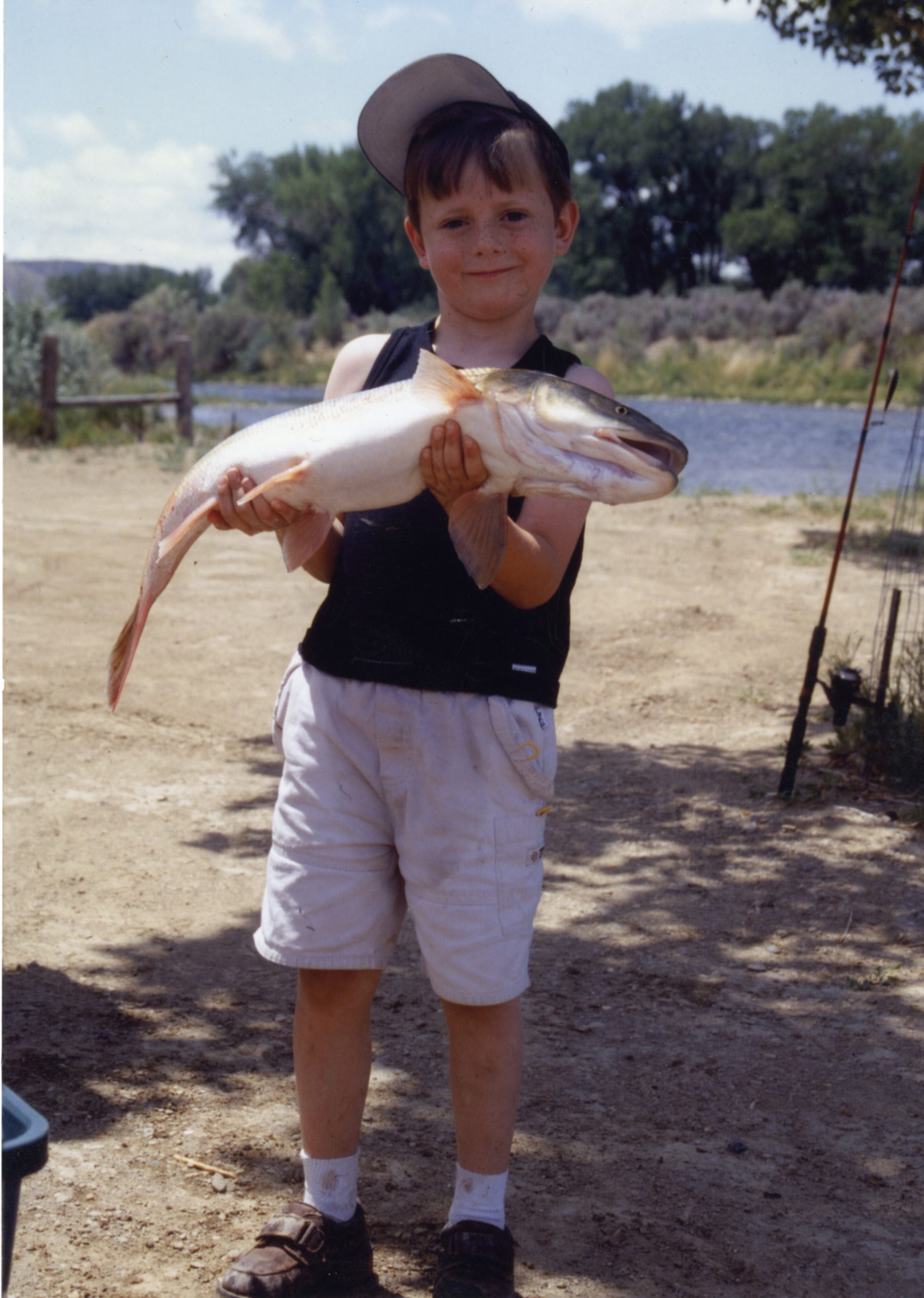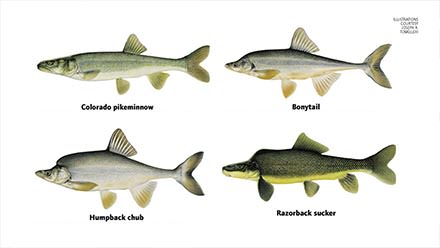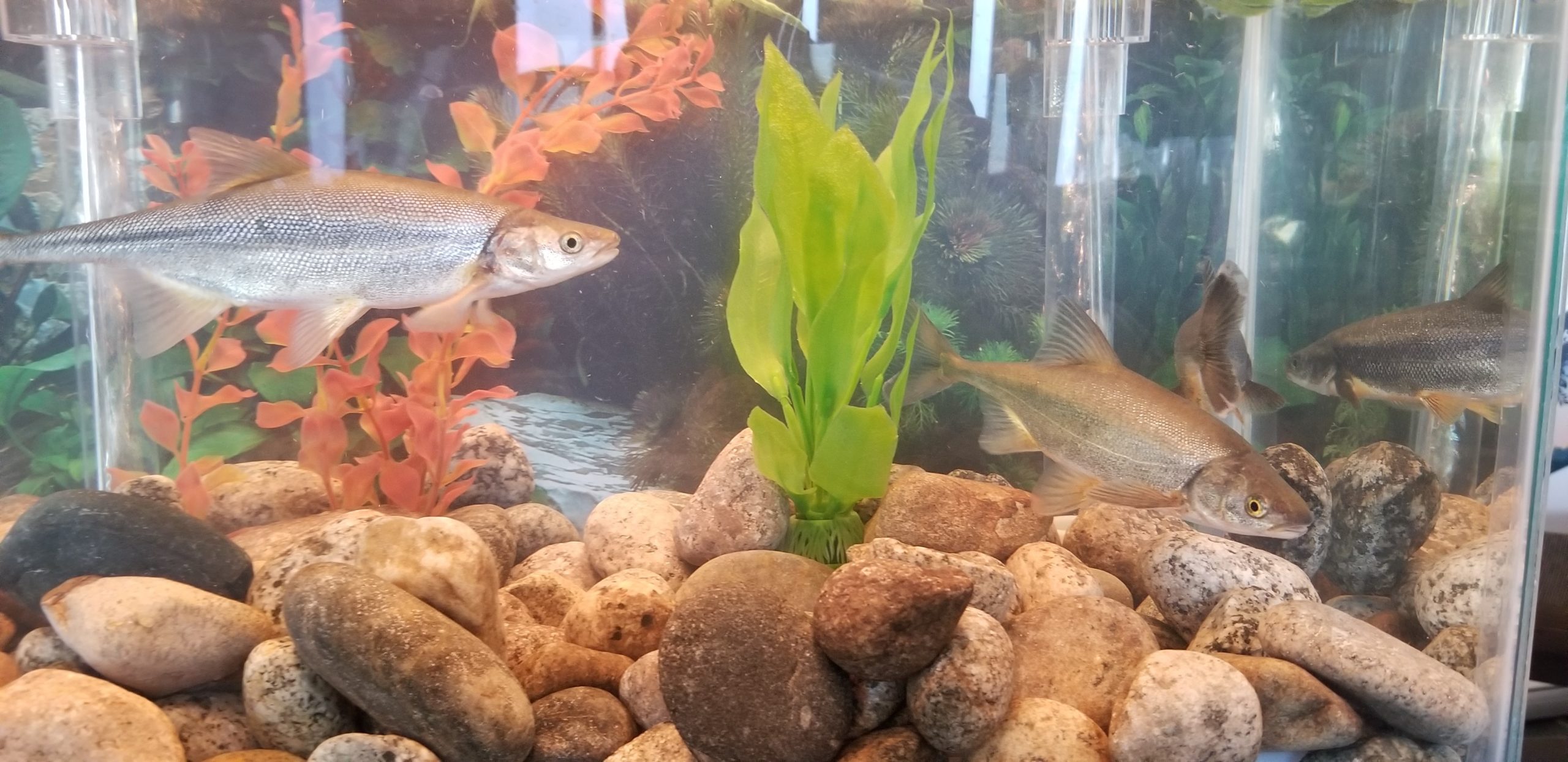
A new chapter in an epic ‘Fish story’
Prelude: Near-death experience
This story begins a few million years ago, but we’ll start with electrofishing on the Gunnison River in southwestern Colorado circa summer, 2000.
I joined a team of U.S. Fish and Wildlife Service biologists on a survey for endangered Colorado River Basin fish. To flush them out, biologists use a metal sphere that produces high voltage. The electricity is harmless to the fish, but not to people. At one point two boats got hung up on some rocks. The one with a shocking ball swung around and the electrified globe landed in my lap.
It should have killed me then and there.
But the pilot of the other boat had stood up while trying to maneuver out of the rocks, a lucky break. That’s because the current only flowed to the ball with weight on the seat. Once he jumped up to steady the boat, the ball lost its charge. I spent the rest of the day spooked. But I kept taking notes. There was reporting to do.
This is my fish story …
Part 1: Big news for a little-known fish
A little piece of news broke last month, one of those developments so easy to miss (or skip over) in the daily news typhoon. This one involved a funny-looking fish of ancient lineage barely hanging on in the Colorado River.
The tough little humpback chub, a species some four million years old, is poised for an upgrade. Wildlife agents propose to bump its status from endangered to “threatened.” In the mechanics of species preservation that’s a big step away from the brink.
While not exactly clickbait, it’s a story that has big implications in the West, for Denver Water, for cities and farmers and for water users dependent upon the Colorado River.
Over the years, Denver Water — like dozens of utilities and hydropower producers across the Colorado River Basin — has played an important role in the story, providing water and money to sustain the rare fish.
Along with the humpback chub, these old species include the pikeminnow, razorback sucker and the bonytail, all fish engineered to live in what was once a violent, moody monster of a river but one now subdued, overlaid with the world’s largest plumbing job via dams, canals and hydropower plants.
The fate of the fish has long weighed on the minds of water managers, who understand the power and importance of the federal Endangered Species Act that protects these ancient creatures.
All the way back in 1983, Denver Water was among an early group of utilities that recognized it needed to somehow sustain these fish. That’s when they hired a Loveland-based consultant by the name of Tom Pitts to develop a plan.
“The problem was, these fish were endangered,” Pitts recalled this month, 37 years later. “Me, being a linear-thinking engineer, said the solution is to make them not endangered.”
Pitts chuckles at the memory but he wasn’t wrong. He’s been on the fish rescue mission for the bulk of his career. Now he’s half retired, but spends the working half still helping water users, the U.S. Fish and Wildlife Service and others navigate Congress to maintain support for the program.
That early cooperation grew stronger over years, fueled by the focused work of Pitts and others. It led eventually to development of the formal recovery program that’s still trying to bring the fish back from the edge of extinction.
Even customers chip in for the rescue work. The water we all save on the Front Range means more can leave West Slope reservoirs like Dillon, Williams Fork and Green Mountain and flow toward the Colorado to aid these relics of the old river.
Years ago, Denver Water even had a pikeminnow residing in a small aquarium near the front door of its old administration building, a daily reminder of sorts to protect the river and its occupants.
“We did what we said we were going to do 20 years ago, when this program began, and it worked,” said Travis Bray, an environmental scientist at Denver Water who praises the sweeping collaboration among dozens of organizations that have contributed to the recovery attempt. “The species are better.”
Part 2: Covering the nearly extinct with the now extinct
In 2000, I spent several months of my life running after these fish. I was a journalist, and the feds had just formally launched this major rescue mission for the chub and three of its prehistoric brethren.
A reporting adventure commenced. I floated red canyons in the Gunnison, and big water on the Green and Colorado rivers, camped on riverside beaches with federal biologists, stared up to towering dams and visited sweltering cornfields and baby fish factories. That’s when I was nearly electrocuted on a research trip with a team of national fish trackers.
The result was a gargantuan, three-part series in the now-extinct Rocky Mountain News, presented in three special sections and richly illustrated with eye-popping photography from my then-colleague Patrick Davison. If nothing else, the fish outlived the newspaper.
We called it “Fish story.” We had a lot of fun doing it, promoted the heck out of it and have evidence at least a few sturdy readers made it through the entire thing. They wrote to us saying so.
The teaser read like this: “Once they swam in wild river that carved the West. Then came the dams, ditches and predators. Now Americans are spending $200 million to save four endangered fish. We’ll tell you why.”
Part 3: Decades later, some progress
Today, 20 years later, biologists are presenting a formal argument for progress. And it’s essentially this: five distinct populations of the humpback chub, including four in the Upper Colorado River Basin, have held steady over the last decade without the need to supplement their numbers with hatchery-raised humpbacks.
“I really think the science supports this decision,” Tom Chart, who directs the fish recovery program, told the Associated Press last month. “It’s an opportunity to step back and recognize progress from a variety of these collaborative programs that have been working on ecosystem health and endangered species recovery for a long period of time.”
The “collaborative programs” he references is an unusual consortium of groups, ranging from state agencies, environmental organizations, to the very water users whose actions have done so much to change the habitat the fish depend on — like hydropower producers and big water utilities, including Denver Water.
Together they’ve labored for decades to figure out how best to get what they need from the Colorado River — water, mainly — while doing what needs to be done to protect these prehistoric swimmers.
Work in both the Colorado and San Juan river basins has run the gamut: building fish ladders to help navigate irrigation works, securing water to boost flows, running hatcheries and hunting the invasive fish that feast on the residents.
Saving endangered species isn’t cheap. That $200 million program we headlined in the Rocky Mountain News back in 2000 is closer to $500 million nowadays.
Part 4: A happy new chapter?
The Fish Story series tried to document a lot of these efforts, and get at the odd tension of the very organizations that depend upon the water working against their primary interests to save four strange looking fish that most people have never heard of, nor ever will.
The story eventually ended on the outskirts of Fort Collins, at the U.S. Geological Survey’s Midcontinent Ecological Science Center. The third floor housed the “Wet Museum" and a heavy smell of isopropyl alcohol. Hundreds of jars large and small preserved frogs, snakes and lizards. A few of them include those four strange fish, including the humpback chub.
“Peering in,” said the last line of Fish Story, “we see a window into the past and, perhaps, a disquieting glimpse of the future.”
But maybe not. The latest news on the little humpback chub is a long way from the end of this saga. The fish continue to struggle, though the razorback sucker may also be upgraded soon, and the pikeminnow numbers continue to grow. The bonytail has not fared as well, its population still supported by stocking rivers with hatchery grown fish.
Even so, perhaps that blip of news on the humpback chub means a chance, at least for now, of a happy new chapter for Fish Story.






